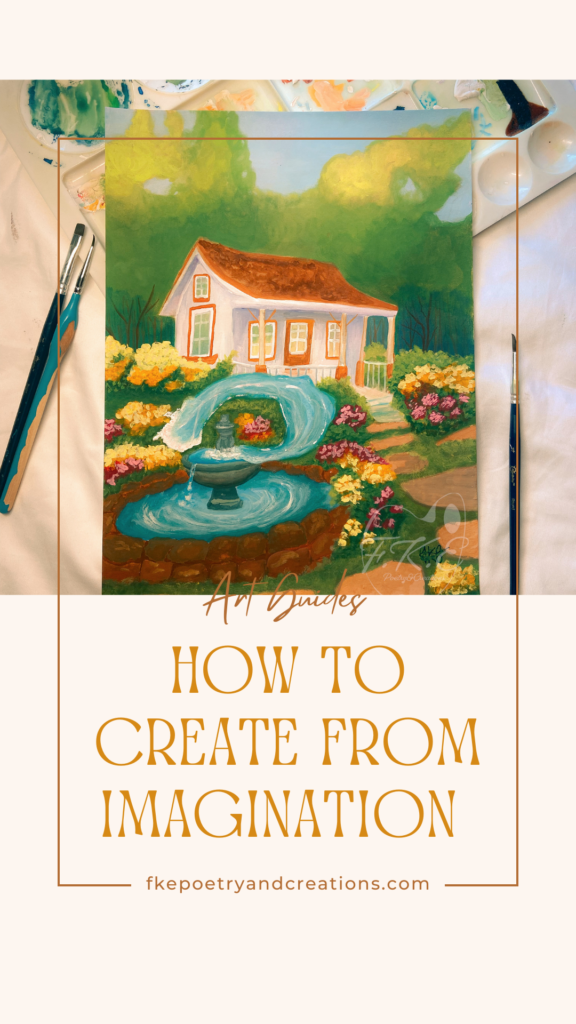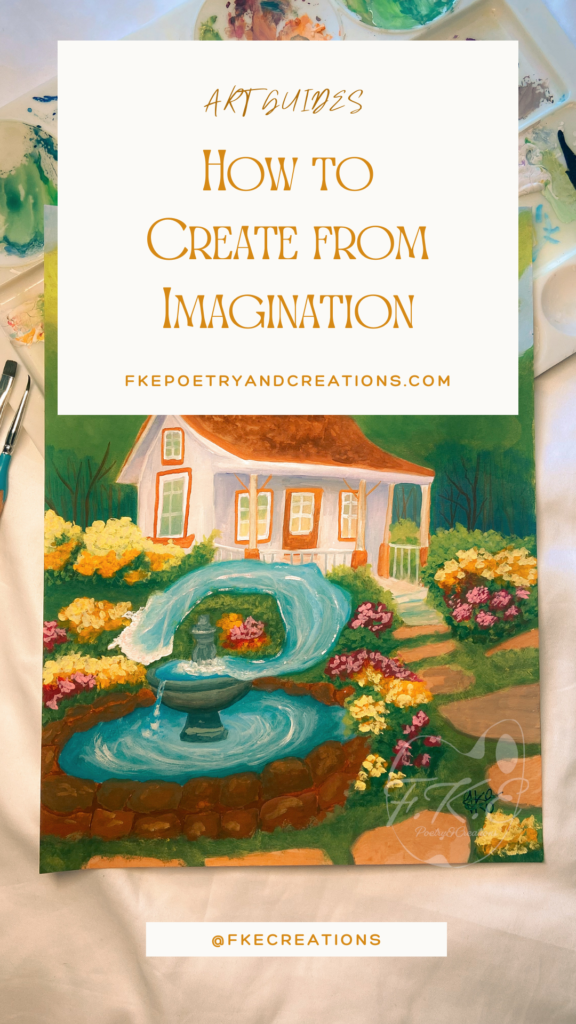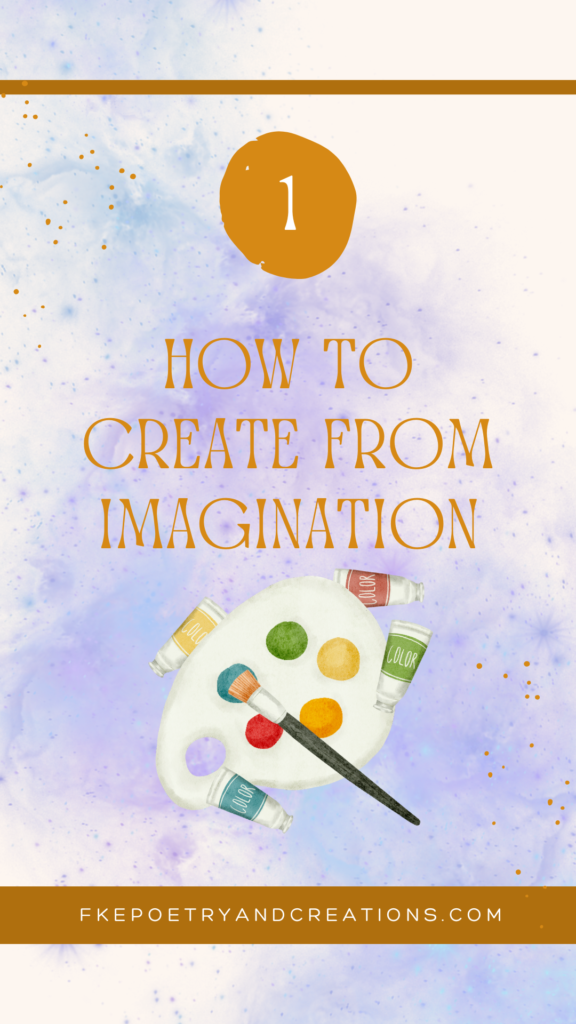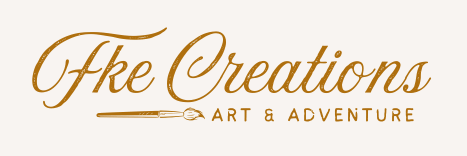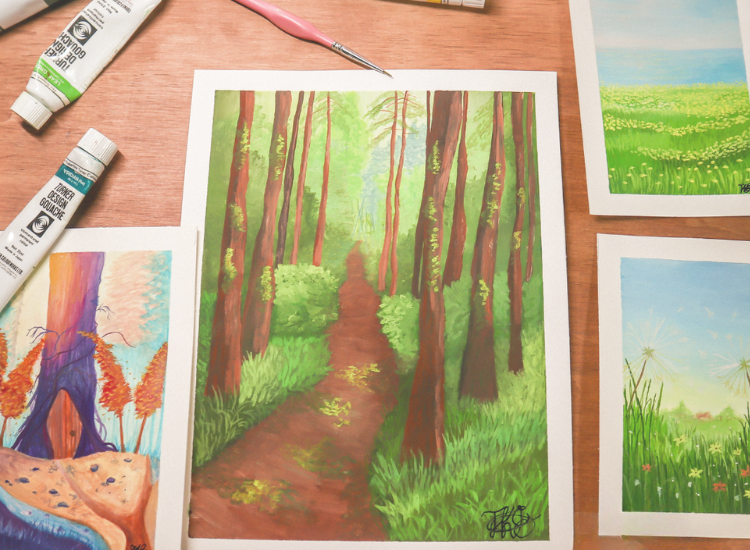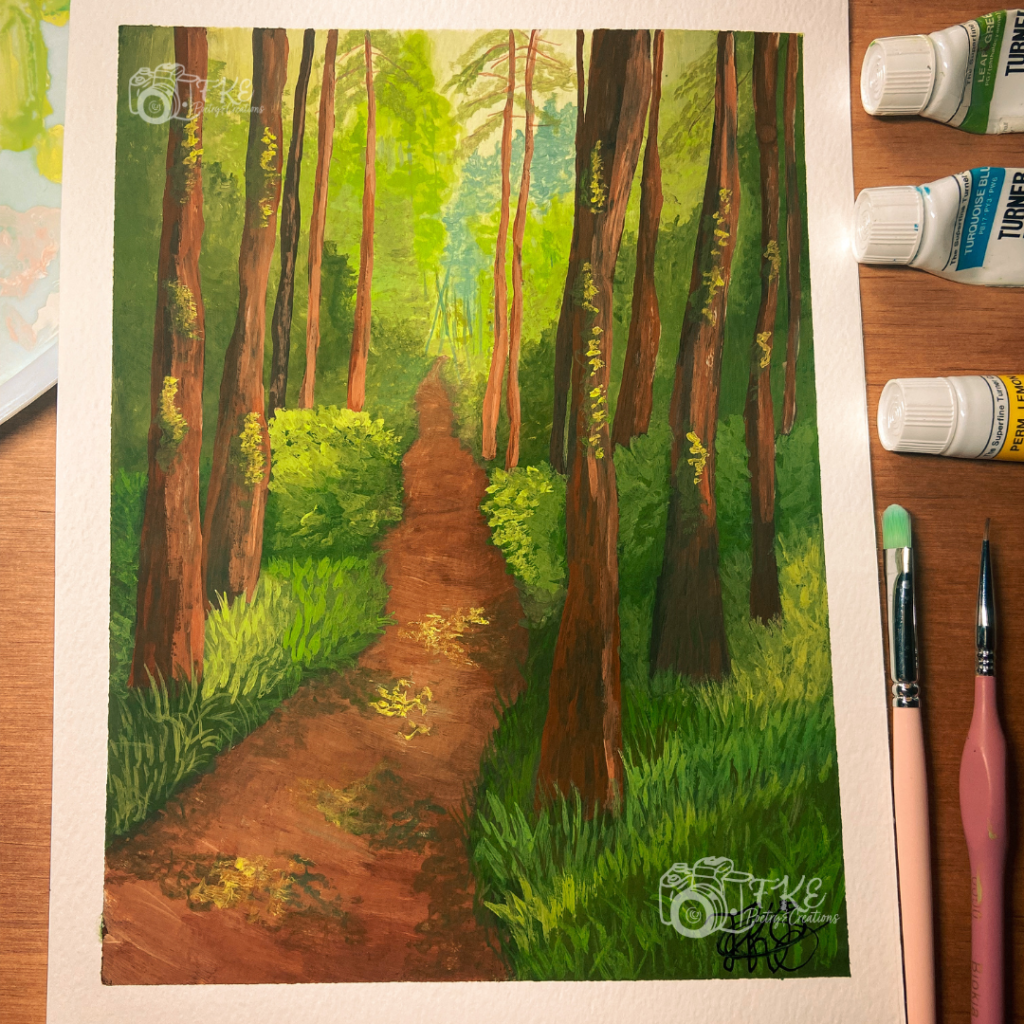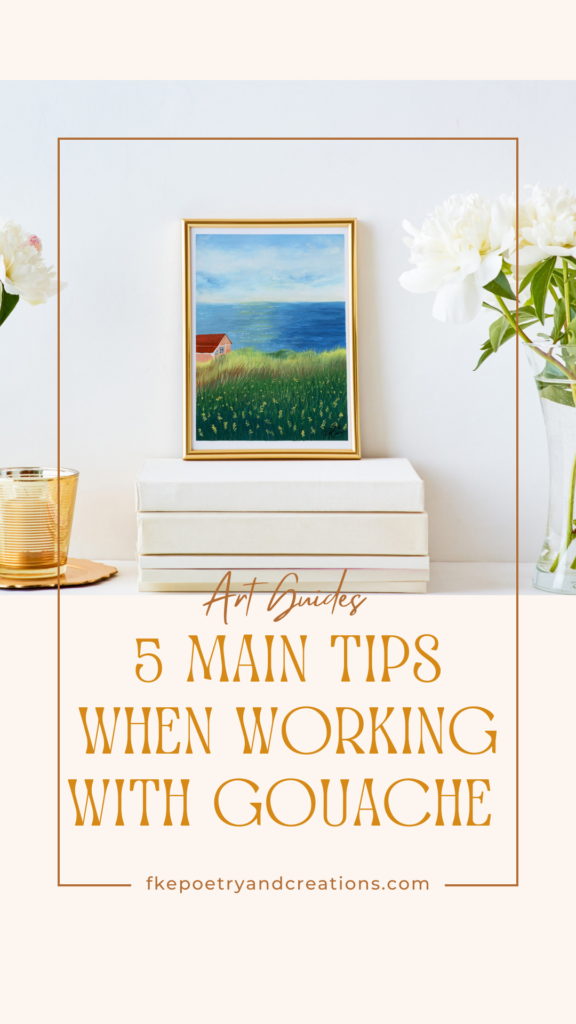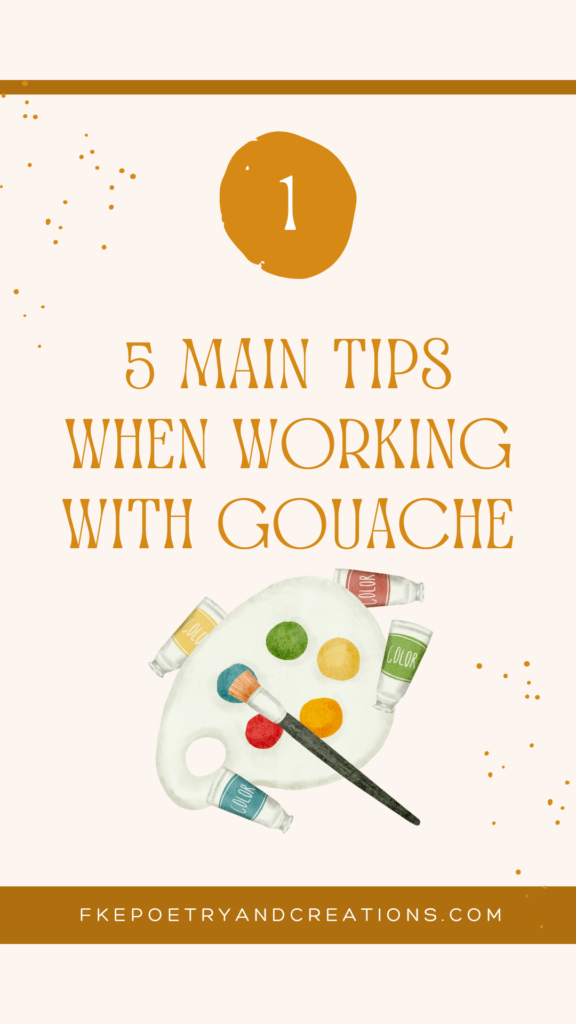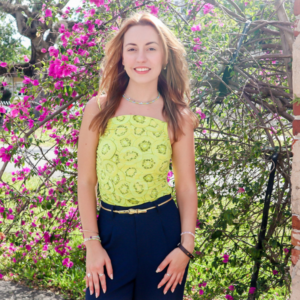You have an idea you think is out of your skillset; what do you do? Do you attempt it anyway, knowing there’s a possibility it won’t come out as you plan, or do you store it in the never-ending vault of someday?
Part of learning to create from imagination is creating freely without the pressure of “the something” turning out good.
A rough idea and a blank page were how my journey into creating from imagination, or in my case painting, started.
It didn’t matter whether the idea was above my skill set; I simply refused to fail before even trying.
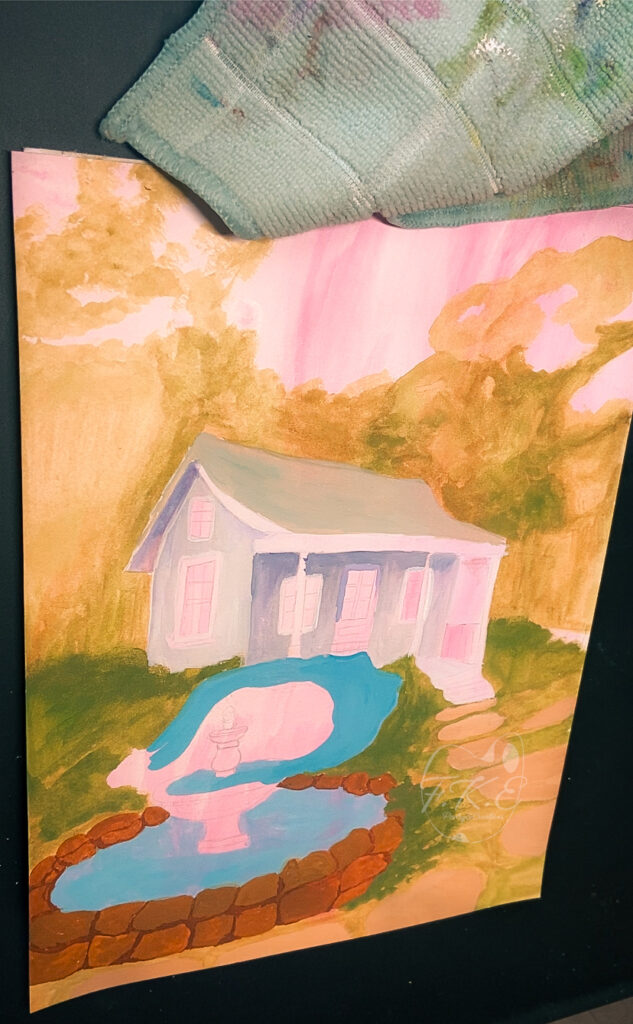
Here are a few things I learned when creating from imagination:
1. You would be surprised what you can do if you enjoy every step instead of laser-focusing on the final result
Take this piece for example; I knew I wanted to paint a cottage-looking house, I wanted magic to be shown somewhere, and I wanted water. Simple enough, right?
So, I started with a layer of background colors and then got to work on what I knew I could paint.
2. Start with what you can do first and focus on what you don’t know later.
Once the house had base layers and looked somewhat okay, I moved my attention to what surrounded it. Adding in little bushes and grass all around the house, I was calmer and more peaceful during this step, feeling as though everything was running smoothly.
3. Look fear in the face and laugh.
At this point, I was still unsure of how I wanted the water to look, but I knew where I wanted it to go. The problem was that everything looked so good, and the magic water could mess it all up. However, instead of giving in to fear, I turned my music up and started singing.

4. Slow and steady.
After a few hours of filling in all the elements of the artwork I wanted (including the magic water), I put the piece on hold for the next day.
I spent a few more days on it, little by little adding details and fine-tuning the piece. After all, when completing something, it’s best to look at it with fresh eyes instead of the need to finish it immediately and move on.

If you try the steps above and still feel like you can’t let loose enough, you might want to try this:
- Have a sketchbook dedicated to imperfect sketches and attempts at drawings.
- Tell yourself you are going to work on this idea five minutes of your time (normally leads to more time spent on the idea).
- Creating in a new medium when you know you haven’t tried yet or aren’t that good at (take some of the pressure of a perfect product away).
- Remember, no one ever has to see the result.
Feel free to comment on some of your own ideas, contact me with any questions, or just chat on Instagram @fkecreations (the link is on the menu bar or homepage).
Pin for Later
